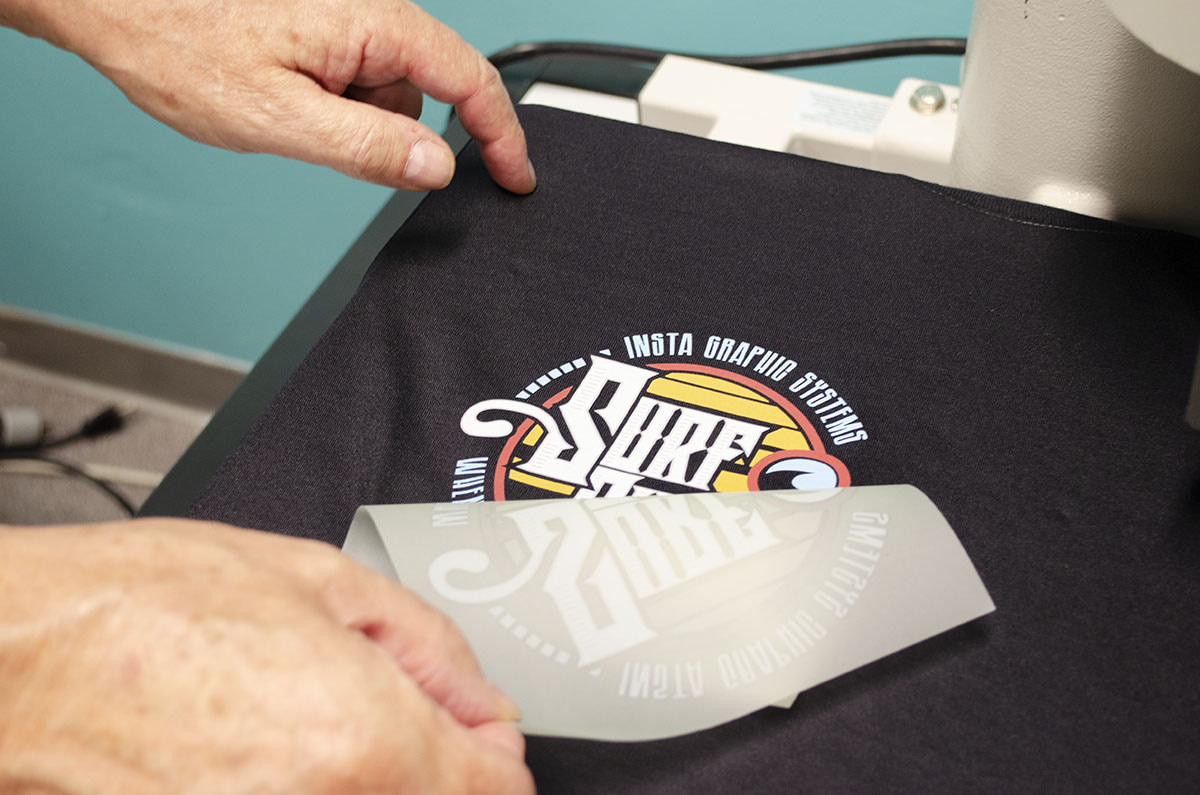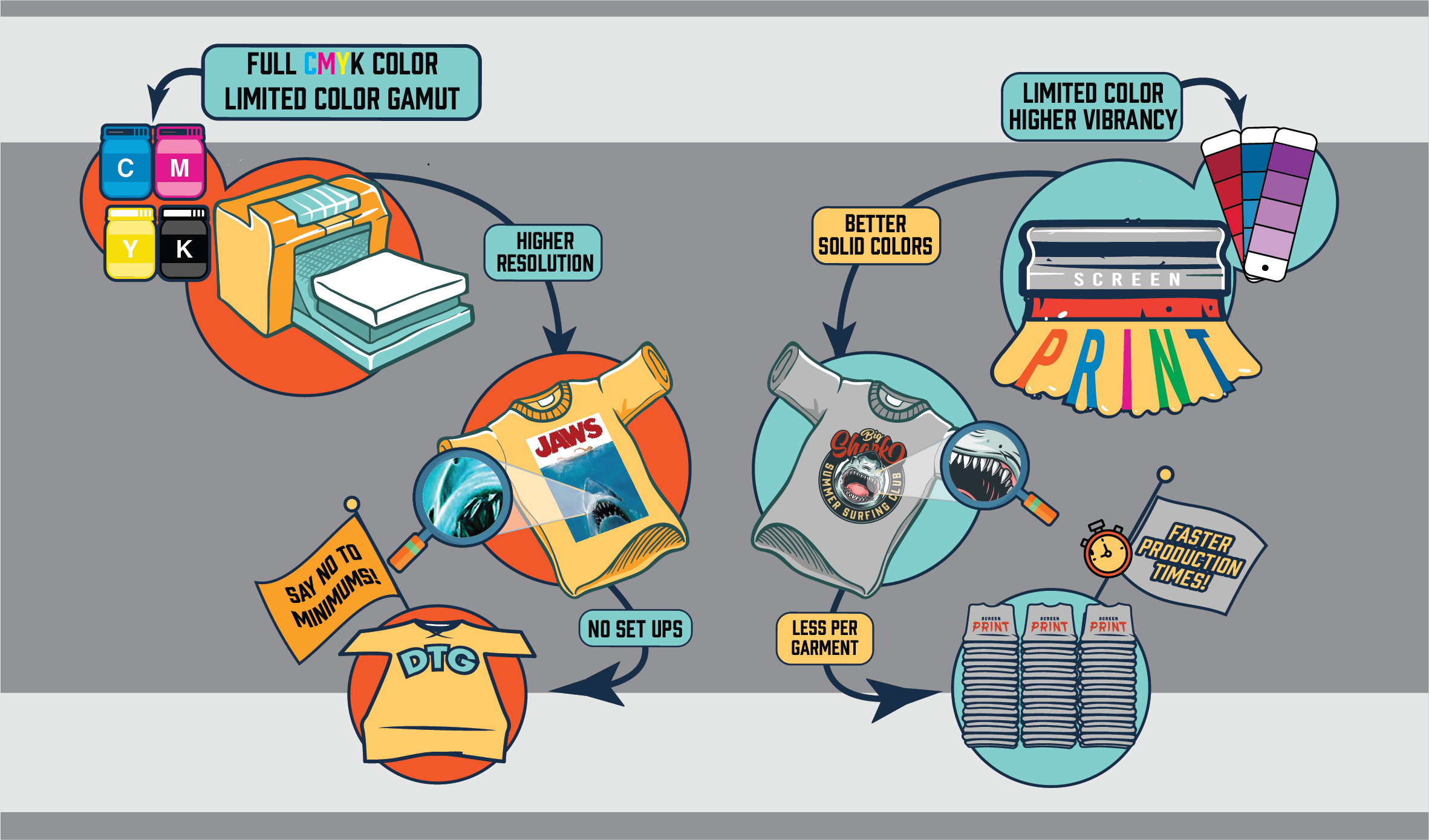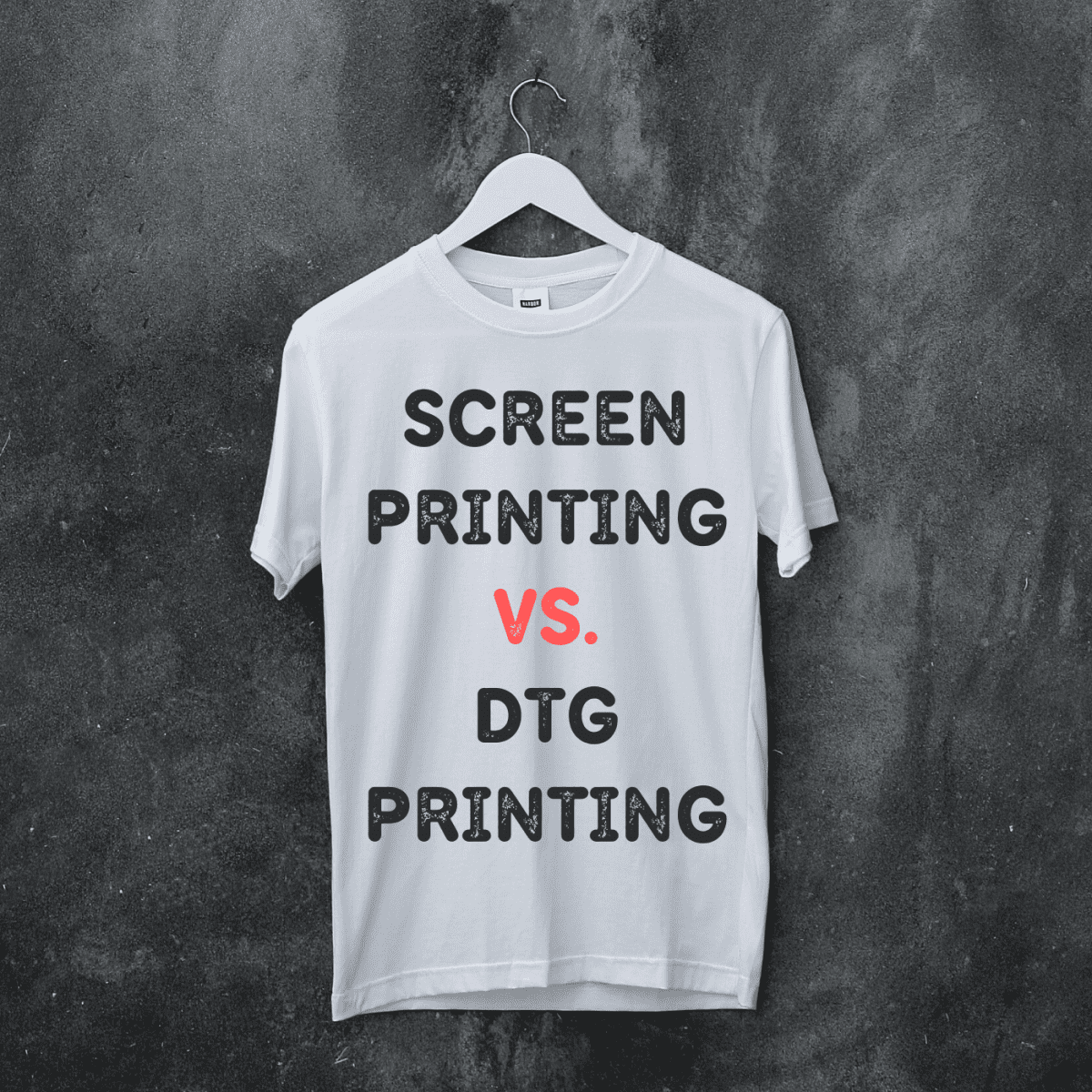Some Of Tx Tees
Some Of Tx Tees
Blog Article
The Ultimate Guide To Tx Tees
Table of ContentsTx Tees Fundamentals ExplainedThings about Tx TeesNot known Details About Tx Tees 7 Easy Facts About Tx Tees DescribedAll About Tx TeesTx Tees Can Be Fun For EveryoneTx Tees Things To Know Before You Buy
That brings your total amount to approximately $1,900 gross and delivery. Build up other expenses, like the number of utilities it requires to run the shop and the cost of ink and solution per design. screen printer. Take the print below for instance. This is a one-color image, so the price of ink per tee shirt is around 20 cents.The solution must only be a few cents because you 'd just require to layer one display for this job. Generally, printers try to make up to 45% revenue on a print job.

With DTF, you can publish a handful of t shirts, or simply one. Utilize the very same calculator as the area above to compute just how much revenue you 'd use DTF transfers. Contrast the expenses and revenues to whichever approach talks finest to your setup and procedure. Both screen printing and DTF have their particular niches worldwide.
Excitement About Tx Tees
The very best way to understand? Ask about and see what print shops like your own are doing. custom monograming. Attempt both out and see which you like far better
When you're picking what type of printing technique to use for printing your artwork styles on your garments, it's essential that you recognize the differences between these 2 strategies so you can optimize outcomes while decreasing costs. Screen printing is the most typically used method for printing styles on textiles.
DTG printing is additionally called place or straight to garment printing due to the fact that it publishes just what is required rather than making a screen as screen printers do. https://telegra.ph/TX-Tees-Your-Ultimate-Screen-Printing-Shop-in-Abilene-TX-03-28. Display printing works by display filler squeegee screen printing ink display mesh screen, after that transferring the photo to garment utilizing warmth and/or pressure
The DTG printer uses unique dye-sublimation inks that are used into a pre-designed image by an electronic printing system. The inks become component of the fabric, allowing for vivid colors and remarkable information. It's also called spot or direct to garment printing due to the fact that it publishes only what is required rather than making a screen as display printers do.
Little Known Questions About Tx Tees.
It's much faster - you can publish a fullcolor photo in mins, as opposed to hours for display printing. Second, there's no established up time or costs involved - you can print any design you like, without having to create a screen. Third, there's no waste - since screen printers display print one layout at a time, they have to screen each shade separately.
The paper is very expensive and can only be used once. Once it's published on, it has actually to be discarded. - The initial purchase rate is reduced than the ahead of time financial investment of DTG printers- You can publish multi-color layouts one display each time as opposed to having to print each color independently like DTG printing.

Some Known Details About Tx Tees
Nevertheless, rather of using display mesh as display printers do, dye sublimation printers utilize laser modern technology to transfer your pictures onto garments or paper. A warm procedure moves the dye from its solid-state directly into the gas stage which subsequently fuses it onto material substratums when they are swiftly warmed to high temperatures under high pressure.
Sublimation printing is eco-friendly. It utilizes less water than screenprinting, and due to the fact that it does not entail making use of dangerous solvents, it's secure for all sorts of apparel. The dye sublimation inks are likewise odor-free when healed, unlike display printers that make use of harmful chemicals during the screen printing process that leave behind an unpleasant odor.
They likewise conserve money on costly tools like exposure devices given that dye sublimation printers do not call for a UV direct exposure device or a flash treatment stove that is generally used see here in screen printing (screen printing shop). What is direct to garment printing (DTG Printing)? DTG printing is an electronic screenprinting procedure that publishes straight onto material utilizing specialized inkjet printers
Excitement About Tx Tees
DTG printing provides many advantages over standard screenprinting, including the capacity to publish photographic quality photos, greater shade vibrancy, and the capability to print layouts on darker fabrics. DTG printers function by heating up the textile ink up until it turns right into a gas. The gas then penetrates the material, bonding with the fibers to develop a long-term print.

Display printers just prepare their screen then start printing until they lack item or ink.- There is a vast array of seasoned display printers around the world, which can be valuable for novices. - It's a slower process - screen printers often need to await the ink to completely dry before they can print the following shade- Screen printers require manual labor, so there's a greater discovering contour and it takes longer to produce a premium design- Screen printing isn't as exact as DTG printing, so you may get some "blood loss" of shades from one part of the photo onto an additional if not done properly.
The Buzz on Tx Tees
Nonetheless, rather than using display mesh as display printers do, dye sublimation printers make use of laser innovation to move your pictures onto garments or paper. A warm process transfers the color from its solid-state directly into the gas stage which in turn integrates it onto fabric substratums when they are swiftly heated up to heats under high pressure.
Sublimation printing is environment-friendly. It uses less water than screenprinting, and due to the fact that it doesn't include making use of hazardous solvents, it's risk-free for all sorts of apparel. The dye sublimation inks are additionally odorless when treated, unlike display printers that make use of damaging chemicals throughout the screen printing process that leave behind an undesirable smell.
They also save money on expensive tools like exposure units considering that color sublimation printers do not call for a UV exposure unit or a flash remedy stove that is commonly used in screen printing. What is direct to garment printing (DTG Printing)? DTG printing is a digital screenprinting process that publishes straight onto material making use of specialized inkjet printers.
4 Easy Facts About Tx Tees Shown
DTG printing supplies several advantages over standard screenprinting, including the capability to print photographic quality images, better shade vibrancy, and the capability to print designs on darker textiles. DTG printers function by heating up the textile ink till it transforms into a gas. The gas then penetrates the material, bonding with the fibers to create a permanent print.
Report this page